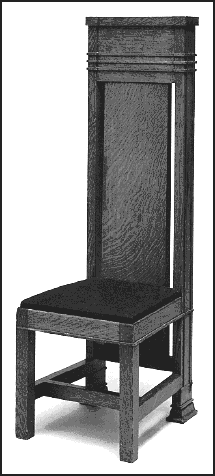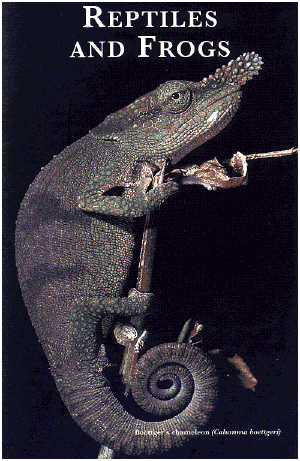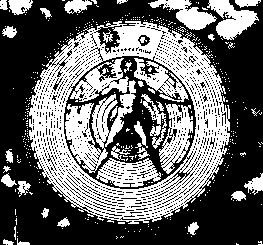In the Midwest
The Prairie School Collection at
The Minneapolis Institute of the Arts
Jennifer Komar Olivarez
(MIA/Minnesota University Press)

It was "organic architecture." The main schtick was to construct buildings that not only blended in with the surroundings, but in which furniture, artwork, windows and other decorative elements were integrated into a whole. They were keen on using indigenous American motifs and colors, and had a weakness for long horizontal lines to emphasize the solidity of rooms and the outer configuration of the buildings.
Featured here is one of the houses built by Purcell --- William not Henry --- presently owned by the Minneapolis Institute of the Arts. The majority of the book, however, is dedicated to items collected from the various Prairie School homes. These are now part of the permanent collection at the MIA. There are chairs, tables, lunettes, windows, tableware, friezes, screens, coffee and tea services, carpets, urns, fireplaces --- and they are a knockout. The lines --- elegantly decorative, albeit deceptively simple; the colors --- mostly muted greens, blues, fire-brick reds; the furniture --- strong vertical lines, arrogantly bold (and probably horribly uncomfortable); the windows --- gloriously lined and colorful.
In fact, some critics have claimed that the Prairie School --- the name was coined in 1936 by Wright --- was at its best in the decorative arts. With regards to the Purcell-Cutts house featured here, they may have a point. The ceilings on the rooms seem oppressively low; the living room and fireplace don't show an easy relationship with each other; the exterior lines --- sharp horizontals --- are a bit too strong (they overpower the other elements); the vertical lines of the windows are in poor scale and relationship to the other elements; and even the decorative element on the entry beam-end seems tacked-on as an afterthought.
 The need to bang us over the head with heavy horizontal lines contrasts with the furniture which often soars ridiculously on massive verticals (See Fig. 2 over to the right). It makes for a quiet riot for the eyes.
The need to bang us over the head with heavy horizontal lines contrasts with the furniture which often soars ridiculously on massive verticals (See Fig. 2 over to the right). It makes for a quiet riot for the eyes.
When looking at buildings, at windows, at furniture, at people, at ourselves, we tend to follow the lines of force. The force-field here is drawn from the world of the Middle West --- wheatfields, fences, roads that went on forever; these contrasted to the huge grain elevators, silos, barns: all a cross-over of simple and direct lines. This architecture reflected clashing forces of the outside world, as one critic suggested, "with a vengeance."
On the other hand, the decorative elements are often gentle, wistful, playful. There is one window in the Purcell house that shows inlaid colored leaded- In this book, form fits function. The volume was designed by Deb Miner and printed in Belgium, and it's artistic, spacious, and classically understated. It is the Prairie School in Print. Most of the items pictured in the book, many of which are in the Minnesota Institute of Arts --- fancy elevator grilles, windows with clear sharp inlay of lead lines, the silver pitchers --- are so elegant that you want to sneak in the MIA one winter night and take a few home with you. Consider the vase (Fig. 1 above); it consists of handwrought silver base, a superbly tall simple glass tube and a curved silver handle. My guess is that it would be a nightmare to use (and to clean) --- but this is a unified aesthetic right out of Keats, a living symbol that "Beauty is truth, truth beauty," --- that is all
Ye know on earth, and all ye need to know.
* * *
Go to a
review
of another Prairie School Book
* * *
Wildlife
Nick Garbutt
Hilary Brandt
Derek Schuurman
(Brandt/Globe Pequot)

There's a golden mantella about as big as your little finger and is red, not gold. There's a tree boa that wraps itself up in the fork of a tree like --- well, like a tree boa. There are some fifty species of skinks.
My sister-in-law was from Vermont and once she and my mother were cleaning up the house and she said to my mother "What's that pretty sculpture you have over the fire-place," and my mother said "There's no sculpture over the fire-place" and the skink was entertained mightily for a few minutes there by two women who didn't like slithery things dancing around and making loud anti-skink music with their voices.
If you are having trouble with your sex-life, think on the common spider. The authors tell us that webs are designed to catch insects, and they are only made by the female spiders. "This poses a problem," they report, "for the male who has to trespass across her dinner table to pair up --- she may mistake him for a meal. Since the male spider is often much smaller than the female this confusion is understandable, and he had to go to considerable effort to achieve his goal without being eaten. His passionless sexual act
how do you know it's "passionless?" Have you ever heard of Onanism? Spider Onanism?
begins with the depositing of sperm into a tiny homemade silk envelope before transferring the precious fluid into the hollow interior of a specially adapted leg called a pedipalp. 
Get that? He jerks off into his leg-bag. And calls it a "pedipalp."
Then comes the tricky part
actually, getting all those babies stuffed into a pedilap could itself be pretty tricky
--- getting it inside the female.
You're right. That is tricky. Especially if she is hungry.
Sometimes he taps out a code on the web to announce his presence
"Attention. This is your husband. I'm out here just beyond reach. I've brought a little surprise for you. A baggie with 10,000 of our children."
Sometimes he presents the female with a tasty morsel to distract her.
"I've got a bit of Kentucky Fried Bug here that will make your eyes --- all 200 of them --- light up."
Alternatively, like the male golden orb-web spider, he may be so tiny he is not worth bothering about.
"This is your husband. Remember the one you used to call 'Shorty.' If you aren't busy right now, I think we should get together. But you have to promise me one thing. I don't want to hear that line of yours, 'Why darling --- you look good enough to eat.'"
Of Recapitulation
To Free Your Soul
Victor Sanchez
(Bear & Co.)

The energetic body is the biggest of mysteries. It is not possible to determine where it starts and where it ends. We may live part of its endless possibilities, but we cannot deplete them.
Sanchez has a system for self-healing he calls "recapitulation." Our interaction with others is, to him, an interchange of energy, some positive, some negative, some neutral.
Energetic exchanges were printed in our energetic body, and we live the way we live, we see the world we see, and we are what we are because of these exchanges and their energetic prints.
This energetic body remembers all the "damages that come from the past," so Sanchez proposes a healing process "to recover the state of energetic completeness and balance that we had when we were born."
Recapitulation is a two-step process. The first is one of revisiting all the interchanges that we have had over the years that have created these damages. Those of us who ended up loathing our fathers, for example, actually made a decision one day, saying to ourselves (probably when we were quite young): "He's a jerk, he's a son-of-a-bitch, to hell with him." We made the decision, and we stuck with it.
Sanchez wants us to relive those moments when we made such decisions and, once having done so, gives us a technique for undoing the hurt. We are to make a list of all these traumatic decisions, then construct a box, in which we will stay to rework these traumas.
He gives exact specifications --- height, width, depth, holes, location. He is insistent that we build the box ourselves --- no hiring carpenters --- because the energy of constructing the box is one key to its curative effects. Having written and reviewed our extensive list of traumas, we get in the box and with specific exercises --- including shouting, screaming, and dialogue with the source of our pain --- we begin the process of healing.
Sanchez, through a fairly convoluted logic that escapes us, somehow ties recapitulation to the Toltec religion. But he didn't have to go so far afield. A quarter-century ago, those of us who were on the neurotic edge did something called the Fisher-Hoffman Process. With the guidance of a practitioner, we would devote six weeks to digging up the horrors of growing up with Mumsie, and another six weeks with Father. Included in the process was writing up a list of the ghastly characteristics of each parent. You'd never believe you could come up with "500 worst characteristics of my mother," but after we got started, sometimes it was impossible to stop.
Then we'd do punishment and forgiveness. We'd study this list, and, among the various exercises, would go to a meeting place with the other Fisher-Hoffmans. For several hours, with bats, broomsticks, pillows, and lots of screaming ("Why did you ignore me?") we would beat the hell out of the offending parent. Then we would start the process of forgiveness.
The theory was that all parents are abusive and all children have been abused. The definition of "abuse" was huge, and it made some sense: the very act of growing up means that the people that have cared for us and nurtured us have to make some mistakes along the way. It was those mistakes that Fisher-Hoffman sought to ameliorate.
 Sanchez's process for forgiveness is in the same general area, and if my arthritis weren't such a pain I'd consider building his Box and spending some time there. At the worst, a couple hours a day salted away between the boards couldn't be any worse than those times we are dealing with the Social Security people or having to listen to calls from telemarketers.
Sanchez's process for forgiveness is in the same general area, and if my arthritis weren't such a pain I'd consider building his Box and spending some time there. At the worst, a couple hours a day salted away between the boards couldn't be any worse than those times we are dealing with the Social Security people or having to listen to calls from telemarketers.
One thing we would suggest, however, is that Sanchez spend a little time spiffing up his writing style. This is not his only book: he footnotes himself and his previous volumes ad nauseam. Alas, his ability to parse is convoluted at best and silly at worst. When he writes,
It is because of our energetic body that we are simply a mystery in the middle of all the mystery surrounding us,
we note in the margin, "Hunh?" And when he follows this paragraph with a four word dicta, "We have no bottom" --- we want to ask him what the hell he thinks we are sitting on (in or out of his box.)